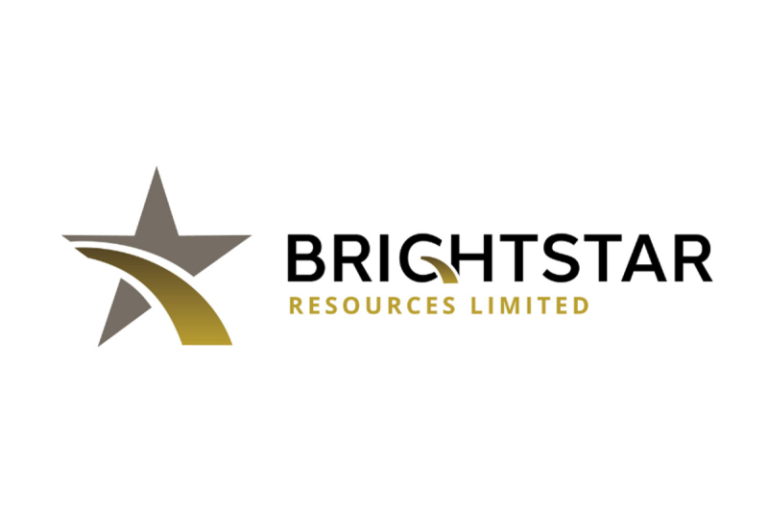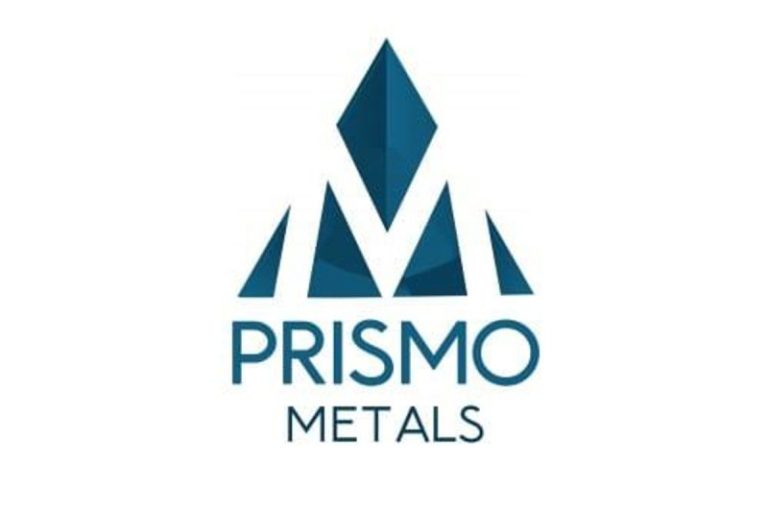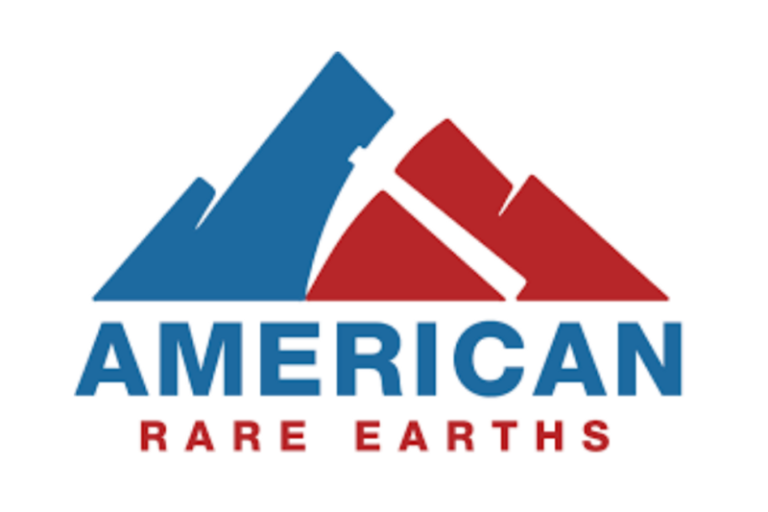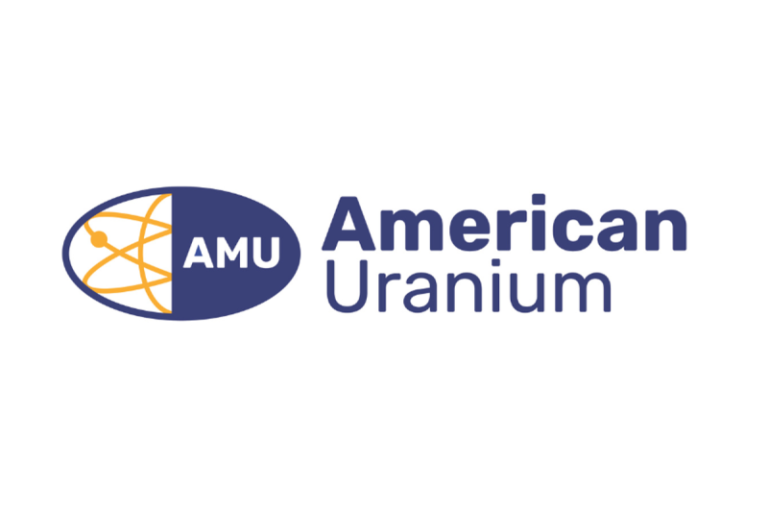(TheNewswire)
Vancouver, British Columbia, November 19, 2025 TheNewswire – Prismo Metals Inc. (the ‘ Company ‘) (CSE: PRIZ,OTC:PMOMF) (OTCQB: PMOMF) is pleased to report that it has completed a detailed exploration program at the Black Diamond area of its Silver King Project located in Arizona. Work consisted of mapping and sampling of the area including the Black Diamond copper replacement body and the newly encountered strongly altered felsic intrusion with stockwork veining. A handheld XRF analyzer was used to complete a soil geochemistry grid and to analyze selected rock samples in a qualitative manner. Additionally, an IP survey was recently initiated over the Silver King land package, with results expected by the first week of December.
Figure 1 . Map showing the location of the Black Diamond replacement and felsic intrusion exploration targets at the Silver King project. Claim boundaries are shown in yellow.
The soil survey defined a large copper anomaly over the Black Diamond replacement body along with some anomalous gold values. Previous rock samples have shown the copper-gold association of mineralization in replacement mineralization. The soil survey also showed Zn, Pb, Ag and Sb anomalies associated with the felsic intrusion. This intrusion is strongly sericitized and is cut by moderate to strong stockwork quartz veins with locally abundant iron oxides after pyrite.
XRF analysis of rock samples in the area was also completed. Although XRF analyses on rocks are generally qualitative and are not valid assays as are rock samples assayed by the geochemical laboratories, they do indicate the presence of the metals of interest and are useful as guides to mineralization.
XRF analyses of individual quartz veinlets in the stockwork hosted by the felsic intrusion locally indicate the presence of silver, lead and zinc as well as some antimony. During the exploration program, Prismo’s geological team took 34 rock chip samples over the area. These samples were submitted to the laboratory with assay results expected in the coming weeks.
Craig Gibson, Chief Exploration Officer of the Company, stated: ‘These results confirm Black Diamond as a copper-gold replacement body target as was indicated from previous work, making this area a compelling drill target. The data collected from the felsic intrusion indicated that it is mineralized, a feature that was not indicated in reports from previous work by Fischer Watt in 1980, although they considered it a prime target based on alteration mineralogy and fluid inclusion studies 1 .’
Drill Permit Update
Prismo also announced that the Forest Service, the federal surface land management entity for Silver King, has determined that the Company’s proposed drill plan meets the regulatory requirements for processing, and that such plan is complete, as described in the regulations at 36 CFR 228.4(c).
The Forest Service will now proceed with the environmental analysis pursuant to 36 CFR 228(a)(5) in conformity with the National Environmental Policy Act (NEPA). This analysis will proceed as a Categorical Exclusion, the lowest level of environment reviews applicable to projects that are not expected to have a significant effect on the environment, such as Silver King.
Alain Lambert, CEO of Prismo stated: ‘We are pleased with the steady progress on the permitting front, especially given the now resolved US government ‘shutdown.’
Mr. Lambert added: ‘With the closing of our recent oversubscribed financing, we are fully funded for the first two phases of drilling. In Phase 1, we plan a drill program at the historic Silver King mine site for about 1,000 meters. That drill plan is designed to test the upper half of the steeply dipping pipelike Silver King mineralized body as well as potential mineralization adjacent to the dense stockwork that was the focus of historic mining.’
Figure 2 . Cross section through the Silver King mine workings showing proposed drill holes (in black) to test the pipelike mineralized body (in red)
Given the Company’s recent discoveries, Prismo has added a second phase of drilling for an additional 1,000 meters. This additional program will focus on the newly identified targets outside of the historic mining area, such as the polymetallic vein and the copper vein mentioned above. Drilling of the large body of replacement mineralization on the patented Black Diamond claim is also being planned and is road accessible on private ground.
1 Haynes, F. and Reynolds, 1980, Silver King Breccia Pipe Prospect, unpublished report, Fischer-Watt Mining Co., 5p.
QA/QC
XRF analyses are considered to be qualitative in nature and cannot be considered to be representative of commercial assays. XRF soil analyses are useful as they indicate variations in metal contents to represent anomalies, although the actual values of the metals present are not necessarily the same as those obtained from commercial geochemical analyses. The company uses commercial standards when using the XRF analyzer.
Qualified Person
Dr. Craig Gibson, PhD., CPG., a Qualified Person as defined by NI-43-01 regulations and Chief Exploration Officer and a director of the Company, has reviewed and approved the technical disclosures in this news release. The historic data presented in this press release was obtained from public sources, should be considered incomplete and is not qualified under NI 43-101, but is believed to be accurate. The Company has not verified the historical data presented and it cannot be relied upon, and it is being used solely to aid in exploration plans. References to mineralization at the Magma Mine and Resolution Copper deposit is not necessarily indicative to the mineralization on the Silver King property.
About the Silver King
Discovered in 1875, the Silver King mine was one of Arizona ‘ s most important historic producers, yielding nearly 6 million ounces of silver at grades of up to 61 oz/t. The Silver King mine sits only 3 km from the main shaft of the Resolution Copper project — a joint venture between Rio Tinto and BHP and one of the world ‘ s largest unmined copper deposits with an estimated copper resource of 1.787 billion metric tonnes at an average grade of 1.5% copper (1) . The unique land position is fully surrounded by Resolution Copper ‘ s claim block, offering strategic upside. Selected samples from small-scale production in the late 1990s returned grades as high as 644 oz/t silver (18,250 g/t) and 0.53 oz/t gold (15 g/t), indicating that high-grade mineralization remains.
About Prismo Metals Inc.
Prismo (CSE: PRIZ,OTC:PMOMF) is a mining exploration company focused on advancing its Silver King, Ripsey and Hot Breccia projects in Arizona and its Palos Verdes silver project in Mexico.
Please follow @PrismoMetals on , , , Instagram , and
Prismo Metals Inc.
1100 – 1111 Melville St., Vancouver, British Columbia V6E 3V6
Phone: (416) 361-0737
Contact:
Alain Lambert, Chief Executive Officer alain.lambert@prismometals.com
Gordon Aldcorn, President gordon.aldcorn@prismometals.com
Cautionary Note Regarding Forward-Looking Information
This release includes certain statements and information that may constitute forward-looking information within the meaning of applicable Canadian securities laws. Forward-looking statements relate to future events or future performance and reflect the expectations or beliefs of management of the Company regarding future events. Generally, forward-looking statements and information can be identified by the use of forward-looking terminology such as ‘ intends’ or ‘ anticipates’, or variations of such words and phrases or statements that certain actions, events or results ‘ may’, ‘ could’, ‘ should’, ‘ would’ or ‘ occur’. This information and these statements, referred to herein as ‘forward‐looking statements’, are not historical facts, are made as of the date of this news release and include without limitation, statements regarding discussions of future plans, estimates and forecasts and statements as to management’s expectations and intentions with respect to, among other things: the timing, costs and results of drilling at Silver King.
These forward‐looking statements involve numerous risks and uncertainties, and actual results might differ materially from results suggested in any forward-looking statements. These risks and uncertainties include, among other things: delays in obtaining or failure to obtain appropriate funding to finance the exploration program at Silver King.
In making the forward-looking statements in this news release, the Company has applied several material assumptions, including without limitation, that: the ability to raise capital to fund the drilling campaign at Silver King and the timing of such drilling campaign.
Although management of the Company has attempted to identify important factors that could cause actual results to differ materially from those contained in forward-looking statements or forward-looking information, there may be other factors that cause results not to be as anticipated, estimated or intended. There can be no assurance that such statements will prove to be accurate, as actual results and future events could differ materially from those anticipated in such statements. Accordingly, readers should not place undue reliance on forward-looking statements and forward-looking information. Readers are cautioned that reliance on such information may not be appropriate for other purposes. The Company does not undertake to update any forward-looking statement, forward-looking information or financial outlook that are incorporated by reference herein, except in accordance with applicable securities laws. We seek safe harbor.
Copyright (c) 2025 TheNewswire – All rights reserved.









